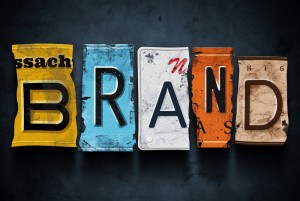 The relationship between Facebook and businesses has been in the news quite often lately, particularly regarding Facebook company pages and the battle with Edgerank. While Facebook seems to be maneuvering to force companies to advertise if they want to be seen, there are also some new technologies that are being promoted to help make the advertisements more enticing and hence more effective. Enter the cinemagraph.
The relationship between Facebook and businesses has been in the news quite often lately, particularly regarding Facebook company pages and the battle with Edgerank. While Facebook seems to be maneuvering to force companies to advertise if they want to be seen, there are also some new technologies that are being promoted to help make the advertisements more enticing and hence more effective. Enter the cinemagraph.
According to a recent article in Adweek, the cinemagraph has actually been around for a few years. Essentially, a cinemagraph is a photograph where one small section is animated. The part of the image that is animated draws in the viewer and focuses the attention on whatever part of the image is moving. The animation may not be directly on the product that is being advertised, by the way. As the examples in the Adweek article demonstrate, often it is a small detail away from the product that moves. The movement itself keeps a person’s eye focused on the ad, and thus the product gets imprinted on the person’s mind whether they are aware of it at the time or not. Like videos that show up in your Facebook news feed, these ads, because of their movement, will make a Facebook user pause and take notice.
Then again, maybe it’s not that great
While some are singing the praises of cinemagraphs and are hopeful that it will increase the effectiveness of advertisements on the Facebook platform, there are others who are far less excited. Simply scanning the comments on the Adweek article, it is not difficult to find people who say that the “cinemagraph” is really just a fancy word for an animated GIF. Those have been around for a couple of decades now. That perspective makes the “cinemegraph” ad seem far less revolutionary.
Is it really the image that matters?
Often times, Facebook advertisements will offer an eye-catching image but the message is far from useful in promoting the product or service in question. Ultimately, a Facebook ad should entice people to “like” your page or to at least visit your page to learn more. While Facebook is becoming increasingly focused on images, especially after their purchase of Instagram, an image alone may not be enough to get the desired click. Take a look at the first “cinemagraph” example in the Adweek article. Can you tell what it is advertising? There is a cup of coffee or espresso being stirred, a newpaper, and glasses (reading glasses perhaps). What is it promoting?
Sally Hogshead, author of the very popular business book Fascinate, recently tweeted that studies have shown the average attention span is down to nine seconds, which is the same attention span goldfish can claim. Apart from what this may tell you about the current state of the human race, if you are a marketer you should understand that you have, most likely, fewer than nine seconds to really capture that nine seconds of attention. Is a slight movement in an image going to be enough, or should there be some explanation there? Something for a person scrolling Facebook to read and ponder?
Who knows what the future holds?
It will be interesting to see if the “cinemagraph” or animated GIF (depending on which camp you’re in) will really take off. The primary fact when thinking about Facebook is that people are not using Facebook to see your ad. They are using Facebook, ostensibly, to keep up with their friends and family. Pulling someone’s attention away from that ultimate goal is challenge one, and getting them to actually perform the action you want is challenge two.
Cinemagraphic ads may or may not be the answer. Time will tell if they are revolutionary or ho-hum. What do you think the outcome will be?
[Photo Credit: Rob Faulkner]
(243)
Report Post






